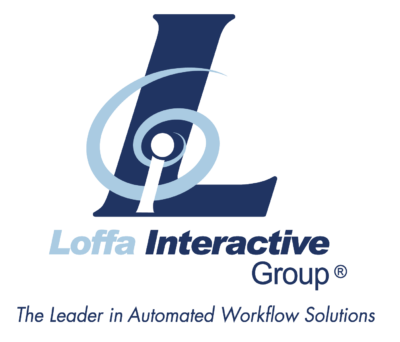The Compliance Challenge: Managing Risks in T+1 Settlement Operations
 In the swiftly changing financial markets, operational efficiency is not just a bonus—it’s a necessity, particularly with the transition to T+1 settlement cycles looming on the horizon. This impending shift is set to redefine the landscape of financial transactions, impacting risk, liquidity, and the overall pace of market operations. Today, we explore how brokerages can harness operational efficiency to secure a competitive advantage in this evolving era, focusing on time zone prioritization and the intricate roles in exception processing.
In the swiftly changing financial markets, operational efficiency is not just a bonus—it’s a necessity, particularly with the transition to T+1 settlement cycles looming on the horizon. This impending shift is set to redefine the landscape of financial transactions, impacting risk, liquidity, and the overall pace of market operations. Today, we explore how brokerages can harness operational efficiency to secure a competitive advantage in this evolving era, focusing on time zone prioritization and the intricate roles in exception processing.
The transition from T+2 to T+1 is not merely a regulatory update—it signifies a strategic evolution aimed at enhancing market efficiency and reducing risk exposure. For brokerages, this change necessitates a substantial revision of internal processes to effectively manage faster settlements. A critical strategy for managing this transition effectively is time zone prioritization, ensuring that teams in different regions are available to handle exceptions as they arise, optimizing the resolution process from Asia through to North America.
The Realities of T+1 Operational Window
While the concept of T+1 suggests a full 24-hour cycle, the actual operational window for processing transactions is considerably narrower—typically around 5 hours. This limited timeframe is due to the need for synchronizing with global banking hours, during which transactions can be cleared and settled. Understanding this constraint is crucial for brokerages as they adapt their workflows and operations to meet the accelerated pace without compromising on accuracy or compliance.
Pathways to Enhanced Operational Efficiency
Improving operational efficiency in a T+1 environment involves several key strategies:
- Streamlining Processes: Tightening workflows is crucial. This includes reducing manual interventions, enhancing automation, and ensuring every step from trade execution to settlement is optimized for speed and reliability.
- Embracing Technology: Technologies like AI and machine learning are indispensable in speeding up decision-making processes, from risk assessment to compliance checks, all tailored to fit within the tight T+1 deadlines.
- Mastering Data Management: Efficient data handling becomes even more critical in a T+1 context. Systems must be robust enough to process higher volumes of transaction data swiftly and accurately, supporting timely and informed decision-making.
Compliance: Your Operational Backbone
 With the reduced settlement period of T+1, the margin for error narrows significantly. Efficient, automated compliance systems become indispensable, performing real-time checks to ensure all transactions meet stringent regulatory standards. This not only helps avert fines but also enhances your firm’s reputation, bolstering trust among clients and investors.
With the reduced settlement period of T+1, the margin for error narrows significantly. Efficient, automated compliance systems become indispensable, performing real-time checks to ensure all transactions meet stringent regulatory standards. This not only helps avert fines but also enhances your firm’s reputation, bolstering trust among clients and investors.
Perspectives on Exception Processing
Different market participants face unique challenges in a T+1 environment:
- Buy Side: Focuses on ensuring that trade instructions are clear and settlements are confirmed quickly to avoid delays.
- Sell Side: Manages higher transaction volumes and must ensure efficient trade confirmation and robust risk management to handle exceptions swiftly.
- Custodian Broker: Ensures the safekeeping and accurate settlement of securities, maintaining precise records and timely transaction processing.
- Executing Broker: Requires real-time monitoring systems to ensure compliance with market regulations and client mandates, allowing for quick discrepancy resolution.
The High Stakes of Non-Compliance
In the fast-paced environment of T+1 settlements, the margin for error in compliance is significantly reduced. Here are some specific examples of exception handling issues that need diligent attention to mitigate risks:
- New Accounts and KYC Compliance: When opening new accounts, the Know Your Customer (KYC) process is crucial to verify the identity of clients and assess potential risks. Missing or incomplete KYC processes can lead to severe regulatory penalties and damage the trust relationship with clients.
- Regulation: Bank Secrecy Act, USA PATRIOT Act
- Purpose: Prevent money laundering and terrorist financing.
- Trade Matching for Economic Details: Ensuring that the trade details match economic realities is vital for maintaining market integrity. Discrepancies in trade details can lead to failed settlements, financial loss, and regulatory scrutiny.
- Regulation: FINRA Rule 2232 (Customer Confirmations), SEC Rule 10b-10
- Purpose: Ensure accuracy of trade details and transparency to the client.
- Affirmations and Confirmations: Quick and accurate affirmation and confirmation of trades are essential in a T+1 environment. Delays or errors in this process can lead to unsettled trades and subsequent financial penalties.

- Regulation: SEC Rule 15c6-1 (Mandatory Three-Day Settlement Cycle)
- Purpose: Ensure timely and accurate settlement of securities transactions.
- Swift Messages Accuracy: Swift messages, which facilitate the exchange of information about financial transactions, must be precise and timely. Errors in Swift messages can cause delays and misunderstandings, leading to compliance failures.
- Regulation: Various global standards and protocols, e.g., ISO 20022
- Purpose: Ensure accurate and efficient communication in international financial transactions.
- Inventory Management: Proper tracking of securities inventory ensures that there are no discrepancies between recorded and actual holdings, preventing potential fraud or misplacement.\
- Regulation: Various global standards and protocols, e.g., ISO 20022
- Purpose: Ensure accurate and efficient communication in international financial transactions.
- Account Adjustments: Moving or splitting accounts and updating SSIs must be handled with extreme care. For SSIs, particularly, manual call-back procedures to verify changes are a critical step to prevent fraud and ensure accuracy.
- Regulation: FINRA Rule 4511 (General Requirements), SEC Rule 17a-3
- Purpose: Ensure accuracy and authorization of account transactions and adjustments.
- Trade Breaks: Handling mismatches between trade details reported by different parties. Quick resolution is crucial to prevent failed deliveries.
- Regulation: SEC Rule 15c3-1 (Net Capital Rule)
- Purpose: Prevent brokerage firms from becoming overly leveraged, ensuring they can cover trade settlements.
- Failed Deliveries: Addressing failures in the delivery of securities, possibly due to insufficient funds or securities. This requires immediate attention to prevent settlement failure.
- Regulation: SEC Rule 204 of Regulation SHO
- Purpose: Reduce the number of settlement failures, specifically addressing fail-to-deliver issues.
- Margin Requirements: Ensuring all margin calls are met on time, especially in volatile markets, to prevent liquidations.
- Regulation: FINRA Rule 4210 (Margin Requirements)
- Purpose: Ensure proper maintenance of margin accounts to prevent excessive borrowing based on securities held
- Corporate Actions: Managing exceptions related to dividends, mergers, splits, and other corporate actions that affect asset valuations and holdings.
- Regulation: Various exchange rules and corporate laws
- Purpose: Ensure that corporate actions are processed accurately and shareholders’ rights are maintained.
- Duplicate Transactions: Detecting and resolving duplicate entries that can arise from multiple inputs or system errors.
- Regulation: General auditing and compliance standards
- Purpose: Prevent fraud and errors in financial reporting.

- Reconciliation Errors: Addressing discrepancies that arise during the reconciliation of accounts and ledgers, which are critical in a T+1 environment to ensure all accounts are accurate and up-to-date.
- Regulation: Sarbanes-Oxley Act Section 404
- Purpose: Enhance financial reporting accuracy through internal control provisions.
- Regulatory Alerts: Managing exceptions triggered by regulatory surveillance tools that monitor for unusual or potentially fraudulent activity.
- Regulation: Various laws concerning market manipulation and insider trading, e.g., Securities Exchange Act of 1934
- Purpose: Monitor and prevent unfair trading practices and market manipulation.
- Client Instructions Non-adherence: Handling situations where trades do not align with client instructions, such as buying or selling outside authorized limits.
- Regulation: FINRA Rule 4512 (Customer Account Information)
- Purpose: Ensure that investment activities align with client instructions and profiles.
- Foreign Exchange Issues: Managing currency mismatches in trades involving multiple currencies, which can affect settlement unless swiftly corrected.
- Regulation: Dodd-Frank Wall Street Reform and Consumer Protection Act (Title VII)
- Purpose: Regulate and provide transparency to the foreign exchange markets.
- Technical Errors: Addressing system malfunctions or connectivity issues that affect trade execution or data integrity.
- Regulation: General IT governance standards like COBIT, ISO/IEC 27001
- Purpose: Ensure information security and proper functioning of IT systems within financial firms.
- Prime Broker documentation, such as an F1SA (Form 1 Schedule A) not being in place when a trade for a new account is created 9or SIA150 and 151), falls under a few categories related to exception handling:
- Account Adjustments:
- Context: This involves ensuring that all necessary agreements and documentation are properly set up and validated before executing any trades. In the context of Prime Brokerage, ensuring that an F1SA is in place is critical to defining the terms of the relationship, including services provided, fees, and responsibilities.
- Regulation: Compliance with FINRA and SEC rules regarding the maintenance and preservation of accurate records and agreements.
- Compliance:Context: Handling trades without the proper documentation breaches compliance requirements. Regulatory bodies require that all broker-dealer relationships and transactions adhere to established legal frameworks to protect all parties involved.
- Regulation: This could come under various regulatory requirements like FINRA Rule 4511 or SEC Rule 17a-3 and 17a-4, which mandate the creation and preservation of accurate records and documentation.
 Client Instructions Non-adherence:
Client Instructions Non-adherence:
- Context: If the trade is executed without the required F1SA, it might also violate specific client instructions or agreement terms stipulated in the client-prime broker relationship.
- Regulation: Violation here could be seen under FINRA Rule 4512, which requires that transactions and account management adhere to the terms agreed upon with the client.
Regulatory Alerts and Risk Management categories might also indirectly relate to this issue, as lacking the required documentation can expose the brokerage to regulatory actions and increase the risk of legal or financial penalties.
 To prevent such issues, it is crucial for brokerages to implement robust control mechanisms within their operational workflow to ensure that all necessary documentation is reviewed and in place before proceeding with any trades, especially in new accounts. This could involve automated checks or compliance approval processes integrated into the trade lifecycle management system. Please request a demo of Loffa’s PBIN suite.
To prevent such issues, it is crucial for brokerages to implement robust control mechanisms within their operational workflow to ensure that all necessary documentation is reviewed and in place before proceeding with any trades, especially in new accounts. This could involve automated checks or compliance approval processes integrated into the trade lifecycle management system. Please request a demo of Loffa’s PBIN suite.
The consequences of non-compliance in these areas can be dire. They range from financial penalties and increased regulatory scrutiny to reputational damage that can affect a brokerage firm’s ability to operate effectively in the market. In worst-case scenarios, systemic non-compliance can lead to the suspension of trading privileges or the revocation of licenses.
To mitigate these risks, brokerages must implement robust compliance frameworks that are capable of handling the increased operational demands of T+1 settlements. This involves investing in technology solutions that can automate and streamline compliance checks, ensuring that nothing is overlooked even as transaction volumes and speeds increase.
By emphasizing compliance as a core component of operational strategy, brokerages not only protect themselves against the risks of non-compliance but also position themselves as trustworthy and reliable partners in the financial marketplace. This commitment to compliance can become a significant competitive advantage, attracting clients who value security and regulatory adherence.
Leveraging SaaS to Enhance Cost Efficiency in Settlement Workflows
In the evolving landscape of financial markets, particularly with the shift towards T+1 settlements, adopting SaaS solutions emerges as a strategic move to boost operational efficiency and drive cost savings. SaaS platforms offer scalability, reduced maintenance costs, and seamless updates, providing brokerages with advanced tools necessary for thriving in a fast-paced trading environment.
Conclusion
As the T+1 settlement standard approaches, operational efficiency transcends from being a beneficial strategy to a critical necessity for survival and success. Brokerages that view this shift as an opportunity to streamline their operations and embrace new technologies are poised to lead the market. In the new landscape of financial transactions, operational efficiency, supported by strategic time zone management and robust exception handling, becomes a pivotal asset, driving growth and ensuring resilience against the rapid pace of industry evolution.
 In today’s dynamic financial landscape, strict adherence to regulatory norms isn’t just a legal requirement—it’s a competitive edge. Recent enforcement actions by regulatory authorities like FINRA highlight the critical nature of compliance, with significant penalties being levied for lapses. An eye-opening case saw a capital markets firm fined over $700,000 for failures in handling trade confirmations.
In today’s dynamic financial landscape, strict adherence to regulatory norms isn’t just a legal requirement—it’s a competitive edge. Recent enforcement actions by regulatory authorities like FINRA highlight the critical nature of compliance, with significant penalties being levied for lapses. An eye-opening case saw a capital markets firm fined over $700,000 for failures in handling trade confirmations. Real-Time Monitoring and Alerts: Loffa’s system offers continuous surveillance of compliance-related activities within the workflow your firm leverages for post-trade settlement operations. It provides Straight Through Processing (STP) in real-time, identifying DK’s that enable prompt corrective action. This proactive approach helps prevent minor issues from becoming major compliance failures.
Real-Time Monitoring and Alerts: Loffa’s system offers continuous surveillance of compliance-related activities within the workflow your firm leverages for post-trade settlement operations. It provides Straight Through Processing (STP) in real-time, identifying DK’s that enable prompt corrective action. This proactive approach helps prevent minor issues from becoming major compliance failures. Benefits of Implementing Loffa’s Automated Compliance Solutions:
Benefits of Implementing Loffa’s Automated Compliance Solutions: your firm’s integrity and financial well-being. Loffa empowers firms to not only meet but exceed regulatory expectations, setting new standards for operational excellence in the financial industry.
your firm’s integrity and financial well-being. Loffa empowers firms to not only meet but exceed regulatory expectations, setting new standards for operational excellence in the financial industry.

 Welcome to the fast-paced world of finance, where every second counts, especially now that we’re moving from T+2 to T+1 settlement cycles. Let me introduce you to Sarah, an operations manager at a bustling brokerage firm, who’s right at the heart of this transition.
Welcome to the fast-paced world of finance, where every second counts, especially now that we’re moving from T+2 to T+1 settlement cycles. Let me introduce you to Sarah, an operations manager at a bustling brokerage firm, who’s right at the heart of this transition. Loffa, a provider of state-of-the-art SaaS solutions specialized in streamlining brokerage operations. Loffa promised not only to refine workflows but also to enhance them through Straight Through Processing (STP), ensuring real-time transaction completion without manual intervention, a crucial factor in the T+1 environment. Convincing her team and the board to invest in this technology proved challenging. The task was akin to adding another ball to her juggling act—daunting yet thrilling with the potential for significant efficiency gains.
Loffa, a provider of state-of-the-art SaaS solutions specialized in streamlining brokerage operations. Loffa promised not only to refine workflows but also to enhance them through Straight Through Processing (STP), ensuring real-time transaction completion without manual intervention, a crucial factor in the T+1 environment. Convincing her team and the board to invest in this technology proved challenging. The task was akin to adding another ball to her juggling act—daunting yet thrilling with the potential for significant efficiency gains. Reflections on a Job Well Done
Reflections on a Job Well Done Conclusion: The Path to Efficiency and Excellence
Conclusion: The Path to Efficiency and Excellence
 In the swiftly changing financial markets, operational efficiency is not just a bonus—it’s a necessity, particularly with the transition to T+1 settlement cycles looming on the horizon. This impending shift is set to redefine the landscape of financial transactions, impacting risk, liquidity, and the overall pace of market operations. Today, we explore how brokerages can harness operational efficiency to secure a competitive advantage in this evolving era, focusing on time zone prioritization and the intricate roles in exception processing.
In the swiftly changing financial markets, operational efficiency is not just a bonus—it’s a necessity, particularly with the transition to T+1 settlement cycles looming on the horizon. This impending shift is set to redefine the landscape of financial transactions, impacting risk, liquidity, and the overall pace of market operations. Today, we explore how brokerages can harness operational efficiency to secure a competitive advantage in this evolving era, focusing on time zone prioritization and the intricate roles in exception processing. With the reduced settlement period of T+1, the margin for error narrows significantly. Efficient, automated compliance systems become indispensable, performing real-time checks to ensure all transactions meet stringent regulatory standards. This not only helps avert fines but also enhances your firm’s reputation, bolstering trust among clients and investors.
With the reduced settlement period of T+1, the margin for error narrows significantly. Efficient, automated compliance systems become indispensable, performing real-time checks to ensure all transactions meet stringent regulatory standards. This not only helps avert fines but also enhances your firm’s reputation, bolstering trust among clients and investors.

 Client Instructions Non-adherence:
Client Instructions Non-adherence:
 To prevent such issues, it is crucial for brokerages to implement robust control mechanisms within their operational workflow to ensure that all necessary documentation is reviewed and in place before proceeding with any trades, especially in new accounts. This could involve automated checks or compliance approval processes integrated into the trade lifecycle management system. Please request a demo of Loffa’s PBIN suite.
To prevent such issues, it is crucial for brokerages to implement robust control mechanisms within their operational workflow to ensure that all necessary documentation is reviewed and in place before proceeding with any trades, especially in new accounts. This could involve automated checks or compliance approval processes integrated into the trade lifecycle management system. Please request a demo of Loffa’s PBIN suite.